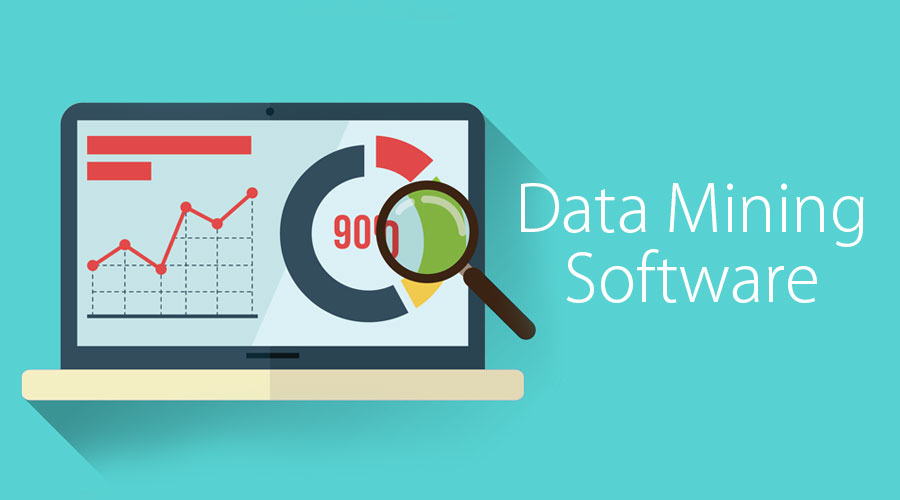Updated May 20, 2023

Introduction to Data Mining Software
Data mining is analyzing data, identifying patterns, and converting unstructured data into structured data ( data organized in rows and columns) for business-related decision-making. It is a process to extract extensive unstructured data from various databases. Data mining is an interdisciplinary science that has mathematics and computer science algorithms used by a machine. Data Mining Software helps users analyze data from different databases and detect patterns. Data mining tools aim to find, extract, and refine data and then distribute the information.
Features of Data Mining Software
Below are the different features of Data Mining Software:
- Easy to use: Data mining software uses Graphical User Interface (GUI) to help the user analyze data efficiently.
- Pre-processing: Data pre-processing is a necessary step. It includes data cleaning, transformation, normalization, and integration.
- Scalable processing: Data mining software permits scalable processing, i.e., the software is scalable on the size of the data and users.
- High Performance: Data mining software increases performance capabilities and creates an environment that generates results quickly.
- Anomaly Detection: They help to identify unusual data that might have errors or need further investigation.
- Association Rule Learning: Data mining software use Association rule learning that identifies the relationship between variables.
- Clustering: It is a process of grouping the data that are similar in some way or another.
- Classification It is the process of generalizing the known structure and applying it to new data.
- Regression: It is the task of estimating the relationships between datasets or data.
- Data Summarization: Data mining tools can compress or summarize the data into an informative representation. This software provides interactive data preparation tools.
Different Data Mining Software
Given below are different data mining software:
1. Orange Data Mining
It is an open-source data analysis and visualization tool. In this, data mining is done through Python scripting and visual programming. In addition, it contains features for data analytics and components for machine learning and text mining.
2. R Software Environment
R is a free software environment for graphics and statistical computing. It can run on various UNIX platforms, MacOS and Windows. It is a suite of software facilities for calculation, graphical display, and data manipulation.
3. Weka Data Mining
It is a collection of machine learning algorithms to perform data mining tasks. The algorithms can be called using Java code, or they can be directly applied to the dataset. It is written in Java and contains features like machine learning, preprocessing, data mining, clustering, regression, classification, visualization, and attribute selection.
4. SpagoBI Business Intelligence
It is an open-source business intelligence suite. It offers advanced data visualization features, an extensive range of analytical functions, and a functional semantic layer. The various modules of the SpagoBI suite are SpagoBI Studio, SpagoBI SDK, SpagoBI Server, and SpagoBI Meta.
5. Anaconda
It is an open data science platform. It is a high-performance distribution of R and Python. It includes R, Scala, and Python for data mining, stats, deep learning, simulation and optimization, Natural language processing, and image analysis.
6. Shogun
It is an open-source, free toolbox. It has various data structures and algorithms for machine-learning problems. Its primary focus is on kernel machines like support vector machines. It allows users to easily combine algorithm classes, multiple data representations, and general-purpose tools. It allows the full implementation of Hidden Markov Models.
7. DataMelt
It is software for statistics, numeric computation, scientific visualization, and big data analysis. It is a computational platform. It can use different programming languages on various operating systems.
8. Natural Language Toolkit
It is a platform for implementing Python programs to work with human language data. It has easy to use interface. It provides resources such as WordNet and has a suite of text-processing libraries and a discussion forum. It is useful for students, engineers, researchers, linguists, and industry users.
9. Apache Mahout
Its main aim is quickly creating an environment for building scalable machine learning applications. It contains various algorithms for Apache Spark, Scala, and Apache Flink. It is implemented on Apache Hadoop and uses MapReduce Paradigm.
10. GNU Octave
It represents a high-level language built for numerical computations. It works on a command-line interface and allows users to numerically solve linear and nonlinear problems using a language compatible with Matlab. It offers features like visualization tools. It runs on Windows, macOS, GNU/Linux, and BSD.
11. RapidMiner Starter Edition
It provides an integrated environment for machine learning, data preparation, text mining, and deep learning. It is used for commercial and business applications, research, training, education, and rapid prototyping. It supports data preparation, model visualization, and optimization.
12. GraphLab Create
It is a machine learning platform to create a predictive application that includes data cleaning, training the model, and developing features. These applications provide predictions for use cases of fraud detection, sentiment analysis, and churn prediction.
13. Lavastorm Analytics Engine
It is a visual data discovery solution that rapidly integrates diverse data and continuously detects outliers and anomalies. It offers a self-service capability for business users. It provides features like transforming, acquiring, and combining data without pre-planning and scripting.
14. Scikit-learn
It is an open-source machine-learning library for Python programming. It provides different classification, clustering, and regression algorithms, including random forests, K-means, and support vector machines. It is built to work with Python libraries like NumPy and SciPy.
Conclusion
This article contains a brief introduction to data mining software. This software helps users to perform data mining tasks efficiently and quickly. If a person wants to build a career in data mining, then these tools are highly recommended.
Recommended Articles
This has been a guide to Data Mining Software. Here we discussed the basic concept, features, and different data mining software. You can also go through our other suggested articles to learn more –

